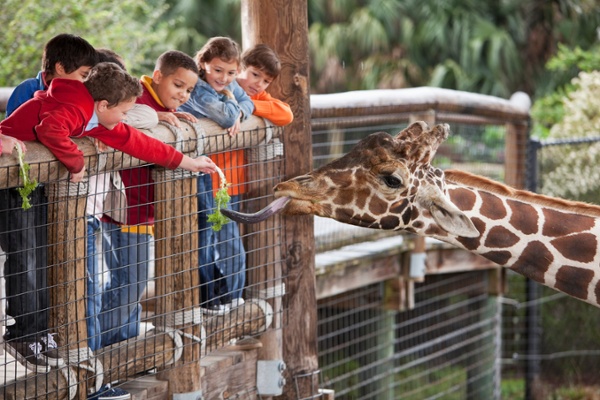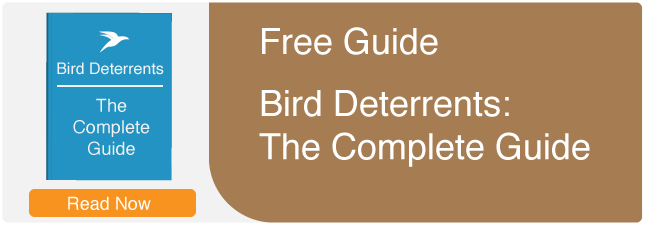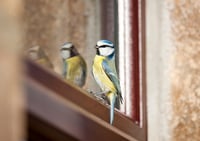
"Don't feed the birds!" While these signs are placed in various places throughout theme parks, fairgrounds, and zoos, they're largely overlooked by guests. Although park and zoo visitors rarely go out of their way to feed birds, the general activities in fairgrounds and theme parks are an attraction for pest birds. Suppose you watch patrons strolling around a theme park. In that case, you'll notice them snacking, consuming sugary drinks, and quickly getting rid of trash at one of the many overflowing bins available within the park's borders. If you're responsible for a zoo or the local fairgrounds, the problems with theme park bird control may even be worse. With the addition of a variety of animals, their natural habitats, and the foods they eat, pest birds have a wealth of reasons to hang around.
Pest birds can be a big deal at theme parks and other outdoor attractions. Flocks of birds become a nuisance to customers, leave bird droppings on every surface you can imagine, and can even cause hundreds or even thousands of dollars of damage to structures and machinery. With all the reasons birds have to stay around, theme park bird control can seem like an impossible endeavor. But exercising bird control at theme parks, fairgrounds, and zoos can be done. You simply need to address the challenges that exist and seek more creative ways to deter pest birds.
Why Are Birds Attracted to Theme Parks and Zoos?
Theme parks are bright, loud, and filled with people. It's everything birds hate, yet, they flock to these outdoor attractions with zest. Why? The reason is simple. Outdoor attractions like theme parks, zoos, and your local fair provide birds with everything they need to survive. All types of birds prefer to nest in areas where there is an ample supply of food and water. Outdoor entertainment venues like theme parks and zoos do just that and so much more. Here are a few reasons birds are attracted to theme parks, zoos, and fairgrounds.
An Endless Supply of Food
On-the-go snacking is an important feature of theme parks, and that requires active theme park bird control. Food that doesn't require plates and tables allows hungry patrons to eat while waiting in line or walking to the next attraction. Full meals (complete with plates and tables) are also available. Most often, these tables are located outdoors, giving birds convenient access to every crumb that falls.
Few Natural Predators
Theme parks are heavily populated and include noisy equipment. So many wildlife creatures that would deter pest birds choose to stay away. Local fairs and zoos have similar conditions with the addition of other animals that keep predators away. Since pest birds adapt easily in heavily populated areas, they know they can likely eat and nest with little to no interference.
Animal Habitats That Feel Natural
Some animals that live in zoos or are at your local fair can be natural bird predators. Their habitat mimics the natural environments birds are accustomed to. These habitats often provide the best of both worlds with natural plants and trees alongside tall fences that give birds an excellent vantage point.
Safe Structures for Nesting
Without any bird control methods in place, fences, buildings, outside eateries, and the framework of tall rides provide birds with a variety of safe nesting spots. In these areas, birds can easily watch for available food and dangerous predators.
Dangers of Pest Birds in Theme Parks, Fairgrounds, and Zoos
In areas filled with animals, hundreds of people, and an assortment of equipment, it seems as though birds would barely be noticed. However, birds travel and nest in large groups and can quickly cause a variety of problems. Here are a few ways birds can cause problems at your theme park, fair or zoo.
Fecal Matter
Bird droppings can cause slip and fall injuries and spread disease. These conditions can quickly be made worse when droppings are located around food areas.
Injuries
Nesting birds can get territorial and attack people nearby. Accidental collisions with people on tall roller coasters have even been reported.
Infestation
Without deterrents, bird flocks can infest outdoor entertainment areas, leaving pounds of droppings each day, dropping feathers, and attracting additional pests.
Harm to Animals
Bird droppings are dangerous to humans, and they can also be dangerous to animals in zoos. Using the wrong bird control methods can pose an even bigger threat to animals. Featured birds may also catch diseases from pest birds.
Damage to Structures and Machinery
Fecal matter and nesting materials can cause damage to buildings, eateries, moving exhibits, and rides.
Challenges With Theme Park Bird Control and Other Outdoor Attractions

While there's no doubt that any outdoor attraction where thousands of people visit (and eat) daily requires a theme park bird control plan that addresses birds, there are many challenges that arise. Bird control at theme parks, zoos, and fairgrounds must be safe, invisible, and extremely effective. Here are some of the bird control challenges that arise at theme parks, fairs, and zoos.
Controlling Pests in Areas With Animals
Zoos and fairgrounds house a variety of animals that can be an attraction for pest birds. These animals are consistently provided healthy food, so they're rarely a threat to birds. Any missed food or crumbs left behind becomes an easy snack. Also, the habitat can provide a nice nesting area for birds. When using bird control in areas where animals reside, it's essential to ensure the animals won't be harmed in the process.
All products for theme park bird control must be non-toxic. Primates are remarkably capable when it comes to accessing products they shouldn't have. Also, small animals can be significantly affected by bird control products. Bird netting provides an effective solution on the exterior of many animal enclosures. Optical gel placed in inaccessible areas is another great way to combine multiple solutions for ideal success around zoo animals.
Maintaining an Attractive Area
Pest control in a theme park, zoo, or local fair should be largely invisible. They must avoid interfering with the experience the park provides. This means bird control can't include loud noises, common visual scare tactics, or cumbersome deterrents. Bird spikes are effective deterrents in many areas and blend in with surroundings, making them optimal in a variety of spaces.
Managing Visitors and Trash
A day spent at a theme park or local zoo is a day free of worries and typical chores. It's also a day filled with delicious snacks and can get a bit messy from time to time. Food spills, overflowing trash cans, and (literally) tons of crumbs provide birds with a buffet they can't resist. Theme park bird control must include deterrents that are effective enough to stand up against the many attractions for birds that exist in the area. This often requires a combination of bird deterrents that deter roosting and those that frighten pest birds away.
Theme park bird control and bird deterrence programs at zoos and fairgrounds aren’t impossible. However, it can be difficult. Get in touch with the bird control experts at Bird Barrier to learn more about how to control birds at your theme park or other outdoor venues.
About Bird Barrier
Bird Barrier is a leader in innovative technology designed to prevent birds from landing, roosting or nesting. We specialize in urban bird control to remove birds humanely and effectively. Our website, birdbarrier.com, hosts a wealth of content to help people understand and identify bird control solutions for various problems with pest birds. Please contact us if you need help with a bird related problem. You may also benefit from our free guide, Bird Deterrents: The Complete Guide.






